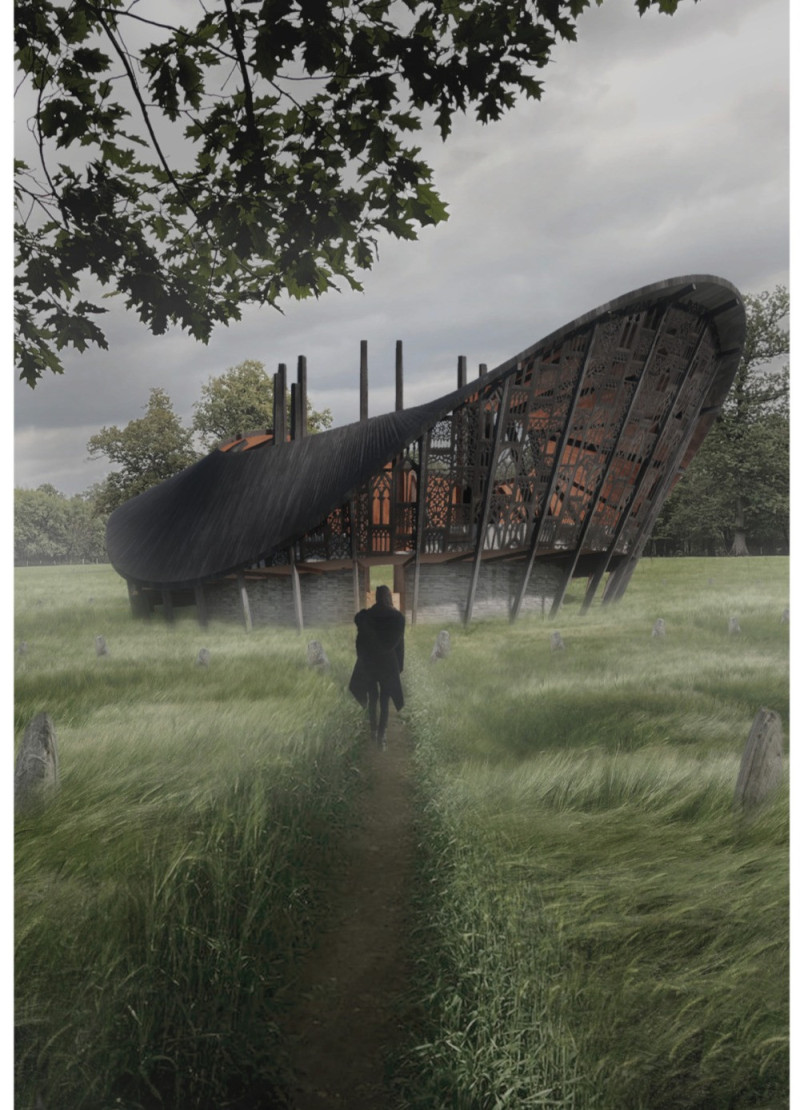5 key facts about this project
The Forgotten Women Sanctuary is located in the wooded valley of Theux, Belgium. It serves to honor the women who were victims of witchcraft trials from 1581 to 1616. The design focuses on a narrative that traces the paths these women took, leading to a space for reflection and community interaction. The overall concept emphasizes remembrance, using architectural elements that evoke history while offering a place for dialogue and contemplation.
Commemorative Trail
A central feature of the sanctuary is a commemorative trail marked by high wooden poles. Each pole symbolizes the silhouette of an accused woman. This path guides visitors from the castle of Franchimont to the execution site at Jonckeu. The poles serve as both memorials and navigational markers, creating an experience that connects walkers to the tragic history of the location.
Gathering Pavilion
At the end of the trail is a pavilion that functions as a space for gathering. This design encourages social interaction and communication among visitors. Inspired by pagan symbols, which faced historical suppression, the pavilion includes a central hearth. The hearth not only offers warmth but also serves as a focal point where people can come together in reflection and discussion.
Protective Nest Concept
The site incorporates the concept of a protective nest, which plays a significant role in the design of the pavilion. This nest-like structure represents safety and the basic cycles of life, such as the paths of the sun and moon. It creates a sense of security, reflecting the experiences of the women being remembered. This design highlights the need for a refuge in times of hardship, symbolizing continuity in the face of challenges.
Material Composition
Materials are carefully chosen to enhance the design. The foundation is made from local stones, establishing a connection to the site’s surroundings. Above this, a wooden framework provides contrast and adds visual interest. Wooden lattice facades allow light to filter through, creating intimate spaces while maintaining a connection to the outside world. The use of Gothic furniture adds depth to the narrative, blending history with the practical needs of visitors.
The pavilion creates a calm atmosphere, inviting visitors to engage with the past through both physical presence and contemplation.



















































